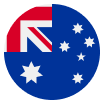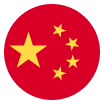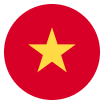Product sourcing from China: How to get started
Last updated: 16 July 2024
Planning to source products from China to Australia? Here’s everything you need to know
Key takeaways
- Find Chinese suppliers on B2B marketplaces like 1688.com and trade shows like the Canton Fair
- Vet new suppliers through factory audits, company verification reports, or product samples
- Always try to negotiate prices with suppliers
- Choose a payment partner that can help you protect your already-thin profit margins

Introduction
China is one of the biggest manufacturing hubs worldwide, and various global businesses source products from it. In May 2024, Chinese exports were valued at $302.35 billion, indicating an increase from the same period of the previous year.
It can seem daunting and confusing if you are sourcing products from China for the first time. Where to find reliable suppliers? What’s the right way to verify supplier credentials without even meeting them face-to-face? How do you pay international suppliers without impacting your profit margins?
We answer all these questions and more in this in-depth guide about product sourcing from China.
Table of Contents
Benefits of sourcing from China
Streamlined supply chain
For businesses, China offers a sustained supply chain with a robust manufacturing sector. Decades of manufacturing have resulted in a wide ecosystem of suppliers who specialise by sector, forming clusters throughout the country. Each cluster has achieved a sustainable cost advantage due to its specialisation in the sector, accumulated know-how, and network of partners. As a result, manufacturers are able to deliver products at a faster pace and scale.
Competitive production costs
Businesses prefer to source products from China because the product costs to output ratio is highly favourable. Lower production costs lead to lower costs for end customers and high profit margins for businesses. However, costs shouldn’t be the only factor you consider. Quality and delivery timelines are just as important.
Market expansion opportunities
Sourcing products from China gives you the opportunity to expand into the global market.
Most Chinese suppliers have experience handling the regulations and documentation of international shipping and sourcing.
Your Chinese suppliers could directly ship products to Amazon FBA warehouses in the US, allowing you to sell on Amazon US from Australia.
Wide variety of products
You can find a wide range of products through Chinese suppliers and increase the number of SKUs. Manufacturers in China offer customization, allowing businesses to source products in various colours and categories. You can also source white labelled and private labelled products.
Step by step guide to sourcing from China
1. Look for suppliers in China
You can choose from different types of suppliers. The right one will depend on how much you can invest upfront and how involved you want to be in the product sourcing process.
Factories/ Manufacturers
The biggest advantage of sourcing from factories is low unit prices since there is no middleman. Factories have minimum order quantity requirements and considerably longer delivery timelines because manufacturers don’t keep a lot of inventory. Instead, products are manufactured when a bulk order is placed.
Another issue can be a lack of communication. Most domestic suppliers in China only have a basic understanding of English, and you may find it challenging to communicate all of your requirements to them.
Distributors and wholesalers
Some manufacturers follow a direct-to-customer (DTC) strategy for selling products, but most manufacturers partner with intermediaries like distributors and wholesalers to sell large product quantities.
- A distributor has exclusive contracts with manufacturers; they serve as the first point of contact for manufacturers in the supply chain
- Wholesalers buy products in large quantities either directly from manufacturers or distributors and sell those products in smaller quantities to retailers or other B2B buyers
Sourcing agents or virtual factories
A sourcing agent helps businesses find reliable suppliers in China, negotiate the best prices, check product quality, assist with documentation, coordinate delivery with the factory, and manage international shipments. They also communicate with suppliers on your behalf and ensure no communication gaps or miscommunication.
Sourcing agents don’t hold stock. They only help businesses secure products within the required lead time. The payment is typically on a commission basis, where the agent makes a percentage of the total order value.
Sellers who are new to sourcing products from China or are too overwhelmed to deal with the language barrier can hire a sourcing agent to manage the entire sourcing process.
The major disadvantage of working with a sourcing agent is that you don’t have a direct line of communication with the suppliers, making it difficult to establish a long-term business relationship.
How to find suppliers in China
Online marketplaces: B2B marketplaces like 1668.com and Alibaba are some of the easiest ways to find suppliers in China. You can check all the products the supplier offers, communicate with them directly and order online. While Alibaba accepts international payments, 1668.com does not directly support payments from international buyers. Instead, you can sign up for a World Account to pay 1668 suppliers through WorldFirst Cross-border Pay.
Trade shows: A great way to find suppliers and meet them face to face is by going to China for a trade fair. The Canton Fair is one of the biggest trade fairs in China where top suppliers from all over the country set up exhibits to showcase their products to overseas buyers. In last year’s Canton Trade Fair, over 2.7 million products were showcased by 28,000 selected exhibitors.
Google and online groups: A quick way to find suppliers is to search for them on Google and look through Facebook groups. However, you must be careful when connecting with new suppliers online and take proactive steps to verify their identity and business.
2. Verify and vet new suppliers
Before placing a bulk order with a new supplier, perform due diligence and vet them properly.
Here are some steps you can take to vet new suppliers:
Company verification reports: A company verification is the most basic form of due diligence that involves reviewing government databases and records to ensure the company is legitimate, has a registered address, and has been around for a while.
Factory audits: You get a third party to audit the factory. The goal is to assess the factory’s capabilities, compliance, processes, documentation, and overall health.
Factory visits: One of the best ways to vet new suppliers is to visit their factories. This can also be a good opportunity to interact with suppliers face-to-face.
Ask for product samples: If factory inspection or visits are not possible, ask for product samples before placing a bulk order with the supplier. Inspect the sample products properly. If there are any QC issues, let the suppliers know.
3. Negotiate prices with the suppliers
You can always try to negotiate prices with suppliers. There are usually two chances that you will get to negotiate on prices: First is when you get an initial quotation from the supplier and the second is when you receive the samples.
Here are some tips for negotiating with suppliers in China:
Ask about bulk pricing for large orders: Your purchase quantity will be the first question a supplier asks you. If your order is only hitting the supplier’s minimum order quantity, getting a discount will be difficult.
While placing a small first order with a new supplier just to test the waters makes sense, you should still try to see if there is room for price negotiation, even on the first order. Instead of just sharing your initial requirements, share the likely annual order quantity and the frequency of orders that the suppliers can expect if everything goes smoothly.
If the annual order quantity is high enough, suppliers will be more likely to decrease their prices to maintain long-term cooperation with your business.
Build trust: Share information about your business and industry to ensure the suppliers take you seriously. If the suppliers know you have an established business with some products already in the market, you become a compelling prospective customer.
Negotiate on the deposit terms: You can also negotiate on the deposit terms to get a possible discount from suppliers. The usual payment terms of suppliers in China are 30% at the time of placing the order and 70% before shipment (The exact deposit terms can depend on the suppliers and the industries).
You can suggest more favourable terms to the supplier, like putting a 50% deposit upfront to lower prices.
4. Look for a shipping partner
Shipping products from China to Australia or other international locations is more complicated than domestic shipping. Several factors need to be considered, including the type of products being shipped, the countries involved in the shipment, and the shipping mode.
Shipping costs can also vary depending on factors such as package weight, volume, and dimensions, as well as the mode of transportation.
There are various types of shipping methods you can consider, including:
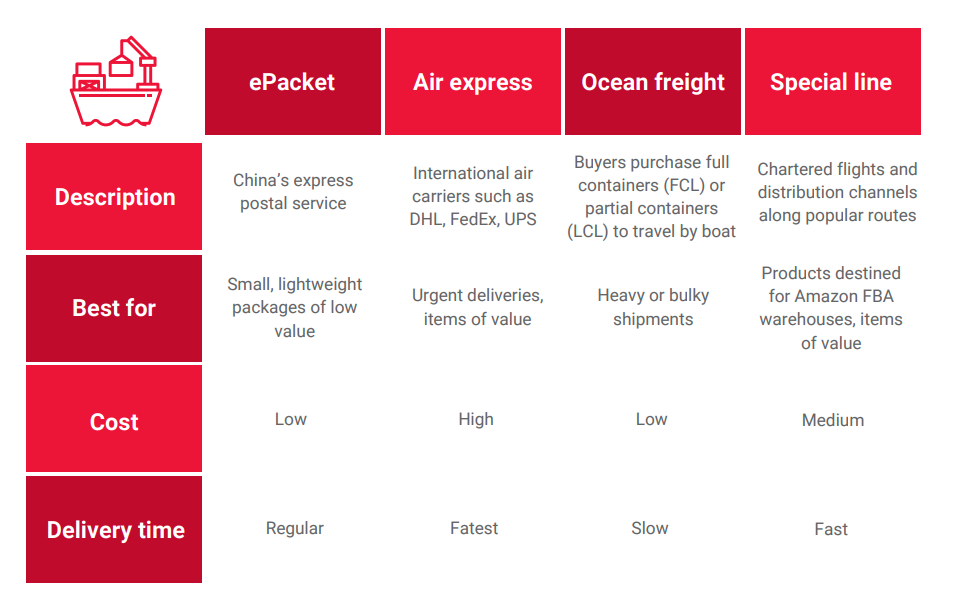
5. Find a payment provider
The last and most important part is to decide how you want to pay suppliers in China. The transfer fees and currency exchange rates shouldn’t cut through your already razor-thin profit margins.
WorldFirst is a global payment provider that supports online sellers in achieving growth through fast, secure, and reliable cross-border payments. SMEs and online sellers can open a multi-currency World Account in minutes and pay suppliers in China like they are just around the corner.
One World Account lets you set up local currency accounts in 15+ currencies, including GBP, USD, CAD, EUR, AUD, NZD, and CNH. Local currency accounts are created under your business’s name. For every currency, you get a separate account number and branch code.
You can send payments to suppliers in 40+ currencies and get access to interbank/ mid-market exchange rates.
With a World Account, you can:
Pay suppliers faster: Send same-day or next-day payments at competitive interbank/mid-market rates (Cut off times apply)
Securely pay 1668 suppliers: WorldFirst Cross-border Pay is the only way to make international payments to suppliers on 1668.com
Collect from marketplaces: Collect payments from 100+ global marketplaces, including Amazon, AliExpress, Etsy, and eBay. Hold the funds to pay suppliers or withdraw funds to your bank account anytime
Protect your profit margins: Lock-in exchange rates for up to 24 months through forward contracts
Send instant payments: Make free and instant between World Accounts.
Keep transactions secure: WorldFirst safeguards customer funds in segregated accounts with leading financial institutions.
- Open 15+ local currency accounts and get paid like a local
- Pay suppliers, partners and staff worldwide in 100+ currencies
- Collect payments for free from 130+ marketplaces and payment gateways, including Amazon, Etsy, PayPal and Shopify
- Take control of spending with the World Card, a business expense card that saves you more with 1% cashback. Learn more
- Save with competitive exchange rates on currency conversions and transfers
- Lock in exchange rates for up to 24 months for cash flow certainty
Disclaimer: The information contained is general only and largely our views. Before acting on the information you should consider whether it is appropriate for you, in light of your objectives, financial situation or needs. Although information has been obtained from and is based upon multiple sources the author believes to be reliable, we do not guarantee its accuracy and it may be incomplete or condensed. All opinions, estimates, mentioned products/services and referenced material constitute the author’s own judgement as of the date of the briefing and are subject to change without notice. WorldFirst shall not be responsible for any losses or damages arising from your reliance of such information.


What is ePacket shipping and how does it work?
ePacket shipping is one of the most popular shipping methods offered by suppliers based in China and Hong Kong.
Feb / 2025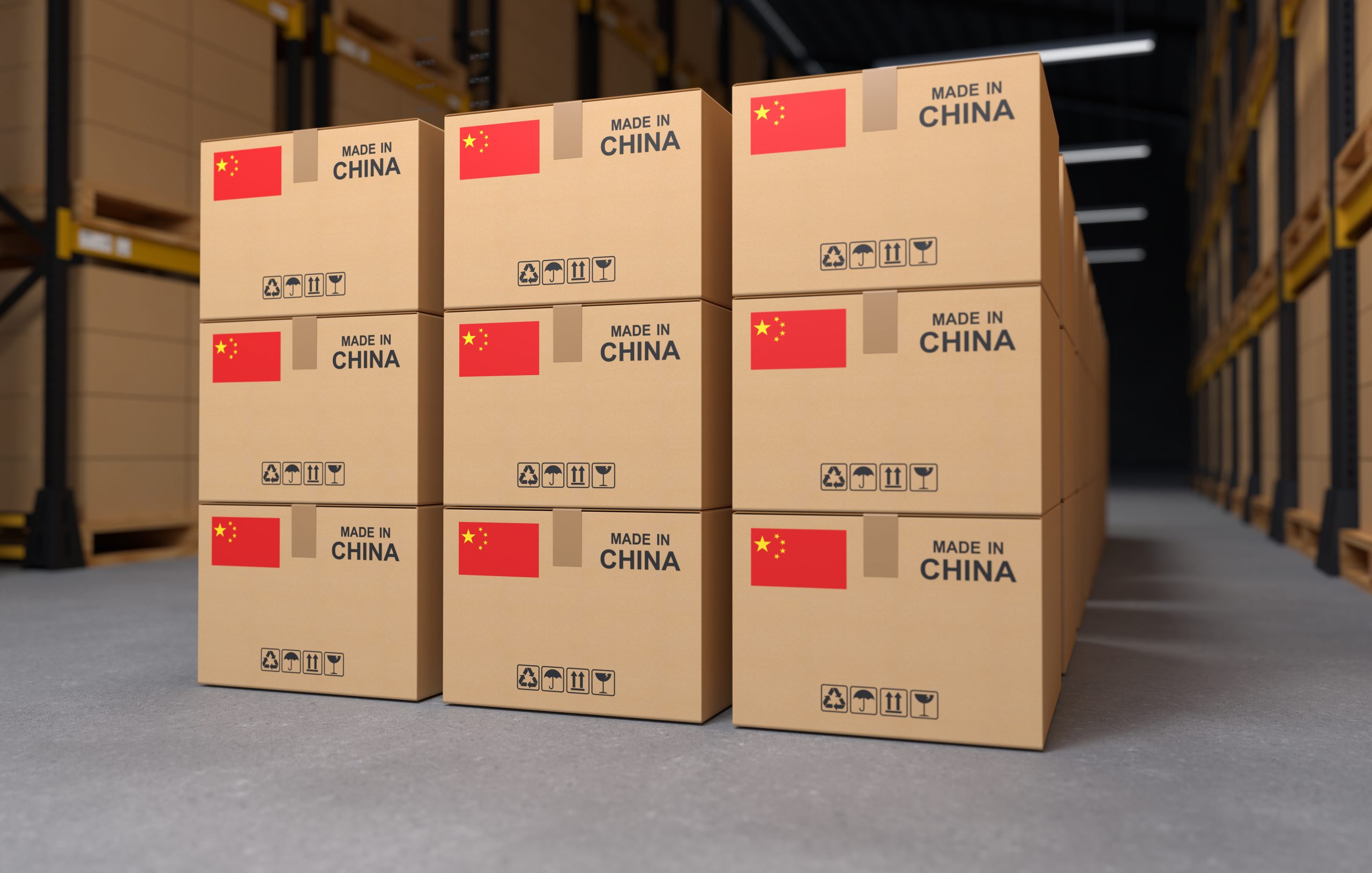
Find suppliers in China: Exploring the popular and not-so-popular ways
Take a look at the top conventional and unconventional ways to find reliable suppliers in China.
Feb / 2025
Canton Fair 2025: Your guide to the China Import and Export Fair
The Canton Trade Fair is one of the world’s biggest exhibitions that connects sellers and buyers.
Feb / 2025Choose a category below for more business, finance and foreign exchange support from WorldFirst.
- Almost 1,000,000 businesses have sent USD$300B around the world with WorldFirst and its partner brands since 2004
- Your money is safeguarded with leading financial institutions













